Seebio Recombinant Human Type III Collagen with High Activity
Time:2023-11-08 Hits:345
Collagen, a crucial protein abundant in the human body, is found throughout various tissues, including skin, bones, muscles, blood vessels, and internal organs. It provides essential structural support. Among the 28 identified collagen types, Type I, Type II, and Type III constitute over 90% of total body collagen, with Type I and Type III being prominent in skin tissue. Collagen's ubiquity and structural significance make it a valuable biomaterial for regenerative medicine and tissue engineering. Ongoing research aims to develop recombinant human collagen for applications like skin fillers, wound healing, and cartilage repair, with a focus on optimizing expression, purification, and bioactivity enhancement. This work holds great promise for improving human health.
Seebio provides highly active recombinant human Type III collagen. For more product details, please contact us: service@seebio.cn or Phone: +86 21 58183719 or Wechat: +86 158 0195 7578
Collagen has a right-handed triple helical structure, where each peptide chain is left-handed. These three left-handed α-chains intertwine to form the right-handed helical structure of collagen, known as the collagen triple helix. These helices aggregate to form a mesh-like structure, providing strong elasticity and robust support, offering dual functions. The structure of a protein determines its function.
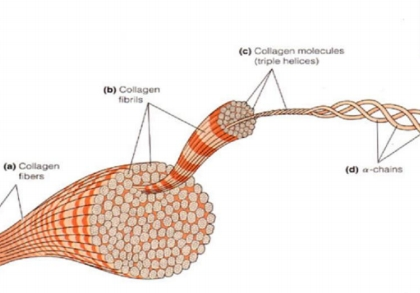
Skin's collagen content reaches its peak between the ages of 20 and 30, after which collagen begins to degrade, decreasing at a rate of 1% to 1.5% annually. The content of Type III collagen begins to decline from birth.
|
Type I Collagen
|
Type III Collagen
|
|
Thick Fibers
|
Thin Fibers
|
|
Appears in Bundles
|
Appears in a Mesh
|
|
Main Structural Support of Skin
|
Distributed around Type I Collagen
|
|
Adult Wound Healing, Tendency to Form Scars
|
Infant Skin Can Heal Without Scarring
|
|
Relatively High Content, Skin is Firm
|
Relatively High Content, Skin is Elastic
|
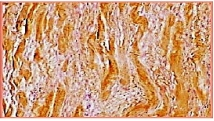
Type I Collagen
|
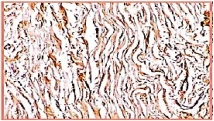
Type III Collagen
|
Sources of Collagen:
Plant-Based Collagen: All collagen originates from animals, and there is no such tissue in plants, nor proteins of that kind. So-called "plant collagen" refers to sugar proteins derived from plants such as peach gum and Tremella fuciformis, but they are not true collagen. Recombinant technologies may utilize plants like tobacco as host cells to produce animal collagen but are not genuinely plant-derived.
Animal-Based Collagen: 99% of commercially available collagen is extracted from animal tissues such as pigskin, cowhide, donkey skin, fish skin, and fish scales. It differs fundamentally from human collagen in genetic sequence, making it a non-homologous substance. This poses risks of rejection, allergies, and viral transmission.
Recombinant Collagen Analogs: Collagen analogs produced through genetic recombination and biotechnology have structural and characteristic similarities to human collagen. However, modifications to their structure may hinder the preservation of all the properties and carry some risk of allergenicity.
Recombinant Human-Type Collagen: With a genetic sequence identical to human collagen, it exhibits excellent tissue compatibility. The immune system recognizes it as a self-substance, facilitating its easy absorption through the skin barrier. It is directly absorbed by the body and actively participates in building collagen in the dermis, ensuring high utility and activity.
Recombinant Human Type III Collagen:
Structure:
Recombinant human Type III collagen has a flexible, curved triple-helical structure with functional regions.

Sequence:
The repeating units of this collagen analog have an amino acid sequence identical to that of human collagen, ensuring high purity.
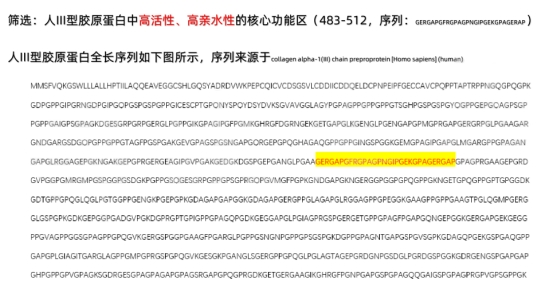
Integrin Binding:
Recombinant human Type III collagen has abundant integrin recognition sites, such as GPAGEK, GAPGER, and GPAGFR. These sites enable interaction with receptors on the surface of fibroblasts, enhancing integrin binding and further regulating cell recognition, adhesion, and migration. Moreover, the flexible curvature of recombinant human Type III collagen promotes better binding with cell receptor proteins.
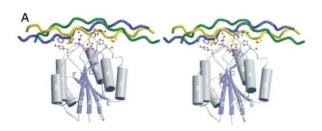
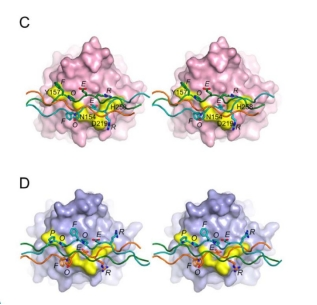
High biological activity
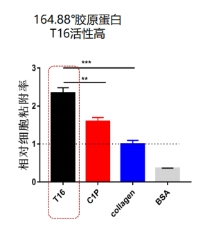
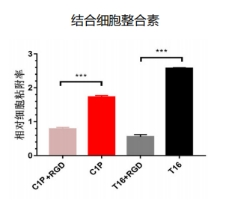
*Chen Hua a, Yun Zhu b, Wei Xu, et al. Characterization by high-resolution crystal structure analysis of a triple-helix region of human collagen type III with potent cell adhesion
Safety Research
|
Test Item
|
Research Results
|
|
Skin Patch
|
Non-irritating
|
|
CAMVA Eye Irritation
|
Non-irritating
|
|
Acute Skin Irritation Test
|
Non-irritating, no phototoxicity, no skin sensitization observed
|
|
Irritation Test Inspection
|
Complies with the "Medical Device Biological Evaluation" standard
|
|
Genetic Mutation Test
|
Negative for genetic mutations
|
|
Acute Systemic Toxicity Test
|
No observed toxicity, no significant weight differences
|
|
Skin Sensitization Test
|
No skin sensitization reaction observed with test extract
|
|
Cell Chromosome Aberration Test
|
Results of the cell chromosome aberration test were negative
|
|
In Vitro Cytotoxicity Test
|
Test extract showed no cytotoxicity
|
|
Subacute Systemic Toxicity Test
|
No subacute systemic toxicity observed
|
Key Functions of Recombinant Human Type III Collagen:
Hydration and Moisturization:
AQP-2 protein, also known as Aquaporin-2, regulates water transport between cell membranes. Recombinant human Type III collagen promotes AQP-2 protein expression, benefiting damaged cell water channels and also promoting hyaluronic acid synthesis.
Skin Improvement:
It significantly increases the thickness of the stratum corneum, enhancing the skin barrier function and promoting the expression of filaggrin and filaggrin-associated proteins.
Anti-Aging:
Recombinant human Type III collagen, when integrated with the extracellular matrix (ECM), significantly stimulates the regeneration of Type I and III collagen in tissues. The regeneration effect varies with different concentrations.
In a rat model of UV-induced skin aging, exposure to ultraviolet (UV) radiation generates a substantial amount of reactive oxygen species (ROS), leading to a decrease in the activity of superoxide dismutase (SOD), an enzyme responsible for neutralizing ROS. This results in DNA damage to skin tissues. However, recombinant human Type III collagen has been shown to reduce photoaging, elevating SOD activity:
The literature also suggests that recombinant human Type III collagen can decrease the levels of matrix metalloproteinases (MMPs), thereby reducing collagen degradation.
Applications of recombinant human Type III collagen protein:
Skin Improvement
Post-sun Improvement
Oral Health Improvement
Light Medical Aesthetics
Eye Cream.
